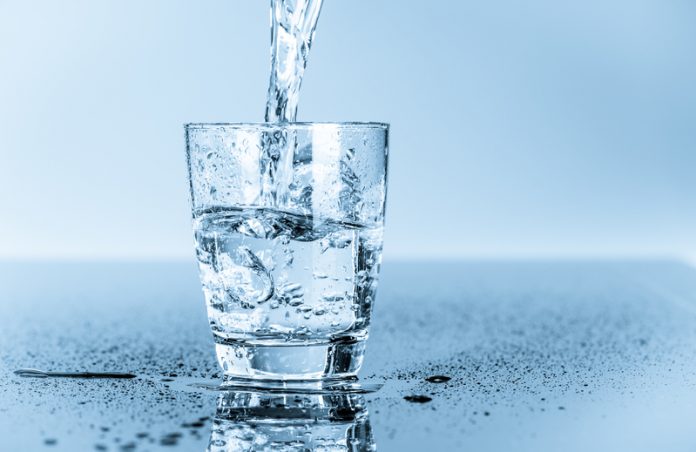Donna N. Myers, Chief of the Office of Water Quality at the U.S. Geological Survey highlights the importance of monitoring water quality to better protect human health and the environment…
Water quality is defined as a measure of the physical, chemical, biological, and microbiological characteristics of water. As shown in the following 2 examples, monitoring water quality provides empirical evidence to support decision making on health and environmental issues. In the United States, an emphasis is placed on monitoring for compliance with the Clean Water Act and Safe Drinking Water Act, which are administered by the U.S. Environmental Protection Agency (EPA). Responsibilities for water-quality monitoring are spread among many Federal, State, and local agencies. The U.S. Geological Survey (USGS) is a Federal non-regulatory science agency with water-quality monitoring, assessment, and research responsibilities.
Monitoring water quality in the 21st century is a growing challenge because of the large number of chemicals used in our everyday lives and in commerce that can make their way into our waters. Methods of chemical analysis and knowledge of chemical toxicity are available for only a few thousand of the more than 80,000 chemical compounds estimated by EPA to be in commercial use in the United States.
An example of why we need to monitor for many more chemical compounds than our current capability allows is illustrated by the spill of a little known coal processing chemical, 4-Methylcyclohexanemethanol (MCHM), into the Elk River in Charleston, West Virginia, USA on January 9, 2014. The Elk River became contaminated by a leaking storage tank containing MCHM, located about 2.4 kilometres upstream from the public water-supply intake for the City of Charleston. River water contaminated with MCHM was drawn into Charleston’s water supply system leaving over 300,000 people and area businesses without water for several weeks. “Researchers had little information on how the spilled chemicals moved through water, their stability or toxicity, or even how to measure them, as published information was either limited or non-existent.” Said Dr. Bill Foreman research chemist at the USGS.
At the USGS National Water Quality Laboratory (NWQL) near Denver, Colorado, USA a strategy is in place to focus new methods research and development on priority chemical compounds – those that are widely used, persistent, and of potential health concern. Using one of the new methods, MCHM and methyl 4-methylcyclohexanecarboxylate, a previously unreported compound, were detected for at least 6 weeks in contaminated water samples collected by USGS and analysed at the NWQL. All detections of MCHM from the Elk River, from other affected downstream rivers, and in tap water samples were below levels of concern established by health agencies. The USGS traced the chemicals over 630 kilometres downstream from the spill site. The compounds travelled farther and persisted longer in the environment than anticipated. The Elk River spill influenced the U.S. Congress to pass the Frank R. Lautenberg Chemical Safety for the 21st Century Act. The Act, which was signed into law on June 22, 2016; revamped the 1976 Toxic Substances Control Act providing mechanisms to better manage new chemicals and those already in commercial use.
Another example of why we need to monitor water quality is the case of corrosive water, one of the underlying causes of lead in drinking water in Flint, Michigan, Washington, D.C. and other cities. This example illustrates how well-designed monitoring programs can serve current and future needs even if future needs are not foreseen. The USGS has been consistently collecting baseline measurements of ground-water quality for decades to serve a multitude of purposes. Recently these measurements were quickly retrieved from the USGS computerised National Water Information System (NWIS) to calculate an index of corrosive water that describes the susceptibility of plumbing to leach lead into untreated water.
Results from 27,000 ground-water sites retrieved from NWIS show that more than half the sites in 25 states contain potentially corrosive water, as may occur in homes dependent on untreated water from private wells. Private wells are not regulated under the Safe Drinking Water Act and well owners are not required, except in some jurisdictions, to test their water. The assessment shows areas of the United States that are most susceptible to lead contamination from plumbing due to the use of untreated corrosive ground water. The study demonstrated that an index of corrosive water, calculated from a wealth of readily available and reliable monitoring data, can inform private well owners where further water testing and treatment might be needed to protect human health.
Why monitor water quality? Monitoring provides the objective evidence necessary to make sound decisions on managing water quality today and in the future. Water-quality monitoring is used to alert us to current, ongoing, and emerging problems; to determine compliance with drinking water standards, and to protect other beneficial uses of water. Assessments based on monitoring data help law makers and water managers measure effectiveness of water policies, determine if water quality is getting better or worse, and formulate new policies to better protect human health and the environment.
https://www.epa.gov/assessing-and-managing-chemicals-undertsca/how-epa-assesses-chemical-safety
https://www.congress.gov/bill/114th-congress/senate-bill/697/allinfo#summary
https://www.usgs.gov/news/chemicals-elk-river-spill-lingered-longertraveled-farther
https://www.usgs.gov/news/new-study-shows-high-potential-groundwater-be-corrosive-half-us-states-0
Donna N. Myers
Chief – Office of Water Quality
U.S. Geological Survey











